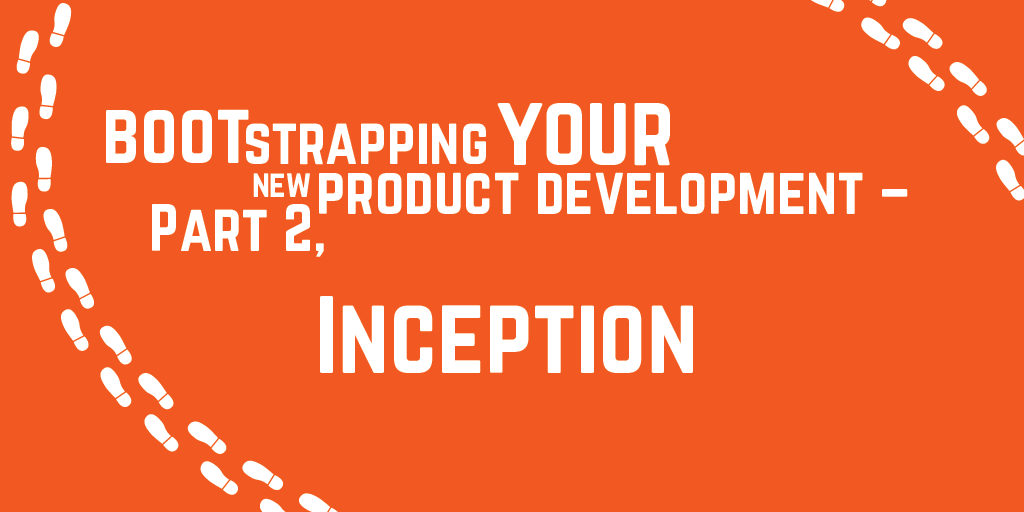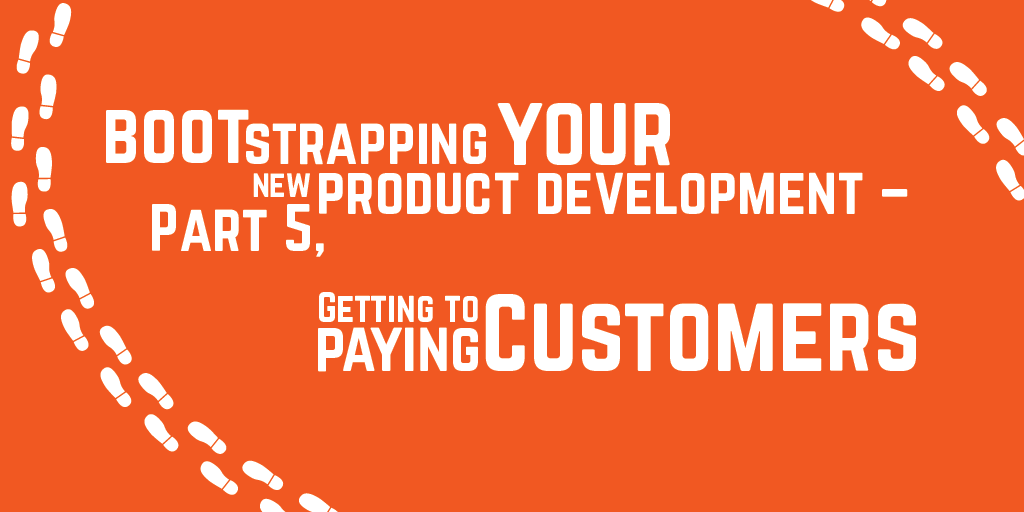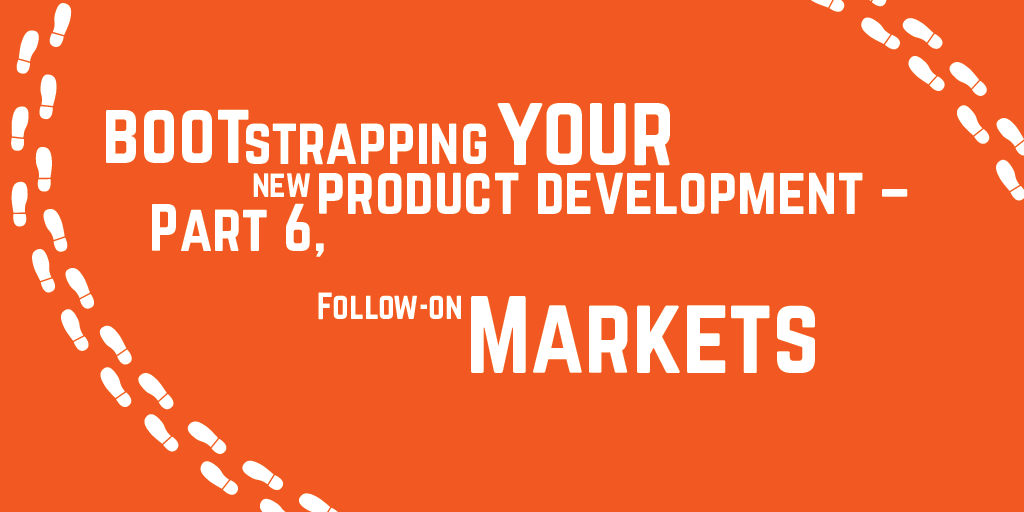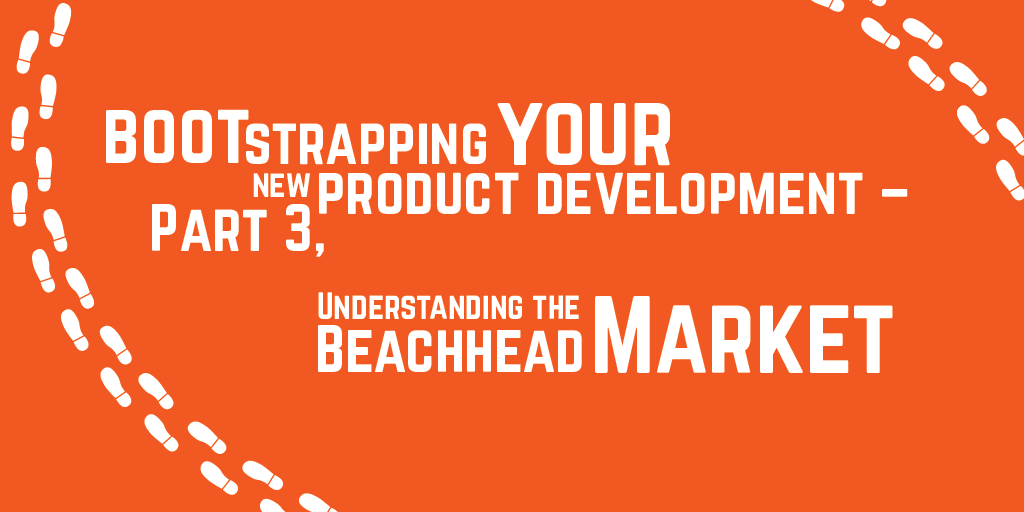Step-by-step guide to bootstrapping your new product development - Part 2, Inception

Endjin spend a lot of time working with start ups and businesses who are pivoting into new product areas. They are usually operating under fierce resource constraints, and this has an impact on the way in which they can approach their development program.
We've evolved a principles-based approach to the new product development process which can be applied to a wide variety of businesses. It's based on the MIT disciplined entrepreneurship approach, incorporating great tools like the Value Proposition Canvas and the Business Model Canvas.
In this series, we're looking at an example of a "lean" new product development process, applying these principles, and looking at some of the caveats.
There are 10 parts in the series, of which this is part 2.
- Principles
- Inception
- Understanding the Beachhead Market
- Competitive Positioning
- Getting to paying customers
- Follow-on markets
- Business model design
- Validation
- Iteration
- Organizational structures to support this model
Part 2: The landscape
Before we even start on new product development, we should understand what it is we are likely to be good at. It is hard enough to get a product off the ground without starting with one hand tied behind our backs.
1. Review the landscape
As an entrepreneur (or indeed, an "intrapreneur" within a larger organization), it's really important to be mindful of the strengths and weaknesses of our organization.
Common questions to ask include:
- Where do we have knowledge
- Where do we have capability
- Where do we have customer or industry connections
- Where do we have name recognition
- Where do we have experience
- How much budget do we have left
Tip: a good way to visualize this is to devote a whiteboard to the organizational landscape. Make a 3x2 grid on the board, and add those categories as headings. As the project continues, update the contents of the board as you increase your capabilities, connections and experience.

This is like the HUD for your organization. It is great motivator, and keeps you focused on the things you do well.
2. Inception

The inception phase is all about determining whether there is a market, and how the offering will fit that market's needs. As we saw in the first part of this series, we're trying to get a very quick, but comprehensive sketch of the whole product, and the market it is intended to address. To that end, we start out by defining some basic boundaries.
2. What is the new product? (0 - 1 day)
First, can you identify what your product actually is?
In one sentence (or so) describe:
- Who will benefit (and how)?
- Does it fit into the landscape?
- Can we execute it well?
- Is it technically feasible?
No go metrics
The metrics at this stage are quite subjective, but allow you to quickly filter an idea if it is not a good fit.
- No beneficiaries identified
- Doesn't fit the landscape
- Beyond our capabilities
- Not technically feasible
3. Define the nature of the new product (0 - 1 day)
This step helps you to understand the inherent risk / reward in the project.
We are trying to categorize the product to help understand what kind of offering it is - a me-too, a better mousetrap, or a time machine?
Are we inventing new technology, creating a new market, or following into an established market? This will help us to understand the potential risks of embarking on the project.
You might usefully taxonomize your product along the following lines:
- a new idea in an existing field?
- a new idea in a new field?
- an existing idea in a new field?
- an existing idea from one field in another existing field?
- a "me too" idea at a new price point
- applying new technology to an existing field?
- applying new technology to an new field?
- applying an existing technology from one field to another existing field?
- applying existing technology to a new field?
No go metrics
Again, metrics here are quite subjective. This helps you to clarify whether you are stepping out into the unknown, either technically or in terms of market development, treading a well-worn path, or somewhere in-between. Once you've articulated the type of your proposition clearly in this way, you'll probably just 'know' whether you have the risk profile right - or whether there is a disagreement amongst the founders/execs about the kind of business they want to build.
It is really important to nail this down early, as it is a common cause of disruption and disagreement later down the line.
4. Brainstorm potential customer groups / market segments (0.5 - 1 day)
Now, we want to start to build a first idea of the customers that we expect to buy our product. The people who are actually going to give money to us, in return for the myriad benefits they will get. This doesn't necessarily mean end users (although in a 2-sided market, you might want to sketch personas that trace the whole revenue stream from A to B to You).
- Sketch personas for the potential customers
- Imagine the primary way the potential customer will use the product
- Imagine the benefit the potential customer will get from the product
At this stage we only want quick-and dirty personae. This isn't a slavish template - include details that are appropriate to your offering.
You are trying to think of as many different personae that could use your product in different ways as you can. Don't just stick to the first group you thought of - try to think as broadly as possible. What happens if you just pivot the feature or benefit slightly? Does it open up a different audience?
If you can get maybe 20-30, you're doing well.
Here's an example.
Persona
Young mother, working part time
Fictional name
Naimh McCormack
Job title
Family lawyer
Demographics
- 28 years old
- Living with partner
- Renting
- One child, 3yo
Professional
- Works in the City 2 days/week
- Works from home 1 day/week
- Mainly works on divorce cases
- Reviewing documentation
- Negotiation and arbitration
Technical
- Familiar with Skype/Lync, remote working tools
- Uses Facebook socially and Twitter professionally / socially. Underused LinkedIn account
- Proficient with Office tools, including Google Docs & Office365, both of which are used by clients
Goals
- Manage, organize and search documentation from case load
- Make sudden transitions seamlessly from home to office, including working on the move
- Ensure security of documentation in all locations
- Ensure personal information about clients is protected
Primary use case
She searches, reads and edits her documents on desktop, laptop and tablet, using her standard tools, wherever she happens to be, and shares them with colleagues over Skype/Lync.
Primary benefit
Assurance that information is secure at rest and held only within the EU jurisdiction, without any change to her standard document browsing and editing workflow
No go metrics
Set yourself a target for the number of different personae you can elaborate for which there is a clear use case and benefit. If you can't find many, it could mean that the product is too niche, or has few opportunities to expand or pivot.
5. Identify top 6-12 target customers (0.5 - 1 days)
Now, we want to take a look at the customer personae we've brainstormed and start the process of mapping the product to those customers.
For each persona, we want to answer basic questions about the market fit. Good questions to ask include:
- Is the target customer well-funded?
- Is the target accessible to the sales team?
- How will this make the customer's life 10x better?
- Does the target have a compelling reason to buy?
- Can you offer a whole solution with this product, or are you addressing a part of the problem / need to partner?
- Is there entrenched competition?
- If you win this target, can you use it to leverage other target segments?
- Is the target aligned with our values / strategy / passions?
Here's an example of the kind of sheet we draw up for each persona.
Market fit
Persona
Young mother, working part time
Fictional name
Naimh McCormack
Total discretionary budget
£500/month
Channels
- UK Legal Partner Mailing List
- Law forums
10x value
Ability to collaborate securely with colleagues from work/home with zero friction - which significantly reduces her childcare/office tension
Compelling reason to buy
She's just experienced a late night dash to the office with the kid in pyjamas, to send a confidential document to a colleague for a morning meeting. She doesn't want to do that again.
Whole solution?
This solution as proposed integrates with the office suite and Office365 platform, so they would need to be sold on this too.
Competition
There are other collaboration suites available of which this offering is a part of the proposition. They do not have good uptake in the market.
Adjacent segments
If we get traction in this market, we could look sideways to local government, social services, barristers, law enforcement, who all collaborate with this user. (See personae X, Y, Z...)
Alignment
Our corporate knowledge and connections are in the legal profession, and we fully understand the needs and motivations of a junior solicitor.
No go metrics
When we've brainstormed the personae fit, we can all put a red, orange or green dot in each box depending on whether we think this is a strong, average or weak fit for our product against this criterion.
We then count greens as +2s, oranges as -1 and reds as -2, and add up the scores for each persona. Those that are positive at the end of the exercise are our potential target markets. We're hoping for at least 6 to 12 of these.
6) Analyse the top targets (0.5 - 10 days)
Now, we're going to do some detailed analysis of the top targets we identified in step 5).
The aim is to get concrete evidence that will allow you to choose a single market to focus on initially, direct from the real customers.
We use very similar documents to our persona and market fit sheets, but structure them around some real-world customer interviews.
- Who specifically is the end user?
- What will they do with it, and how will it dramatically improve their lives?
This helps us ensure that there is a good fit between the persona and the characteristics of real people in the market place. We can also get an understanding of the customer's perception of the market in which they operate:
- Who do they consider to be influential?
- What do they think are the characteristics of the market that will help or hinder adoption ("Oh, no-one ever wants to be the first to try anything new" v. "We love tinkering with new stuff!")?
- Who would they want/need you to collaborate/partner with in this segment to deliver a solution?
- Who are the competitors (from the customer's perspective)?
- How will they buy? You can also assess the customer's readiness for your solution
- What else will your customer need to get full benefit from your product (e.g. infrastructure, data, or consultancy)? And do a bit of (quick) desk research to understand the potential size of this market
- How many potential customers of this type exist if you were to achieve 100% saturation of the market?
No go metrics
Now you've spoken to some real people, validate, and re-score the personae along the same lines as before. If we now have fewer than, say, 6 potential target market segments, we should consider a no-go decision.
7) From your top targets, focus on exactly one market segment
This will be your 'beachhead market' – a part of the market it should be easy for this product to enter and gain traction in, before expansion to other market segments.
Using the scores we've already analysed as a benchmark, look back at the personae and real-world customer data, and consider questions like the following:
- Are the real customers in that segment sufficiently similar in the way that they use the product to be able to build something with a minimal feature set?
- Do they have a similar buying cycle?
- Is the market large enough to be meaningful but small enough to be manageable?
- Are the customers sufficiently communicative to generate word-of-mouth amongst themselves?
No go metrics
We cannot identify a clear beachhead market that scored well in the previous section, and also fit the metrics we choose to define for market size.
Assuming we have now identified a beachhead market, we can advance to the next part.
Read more in the series




